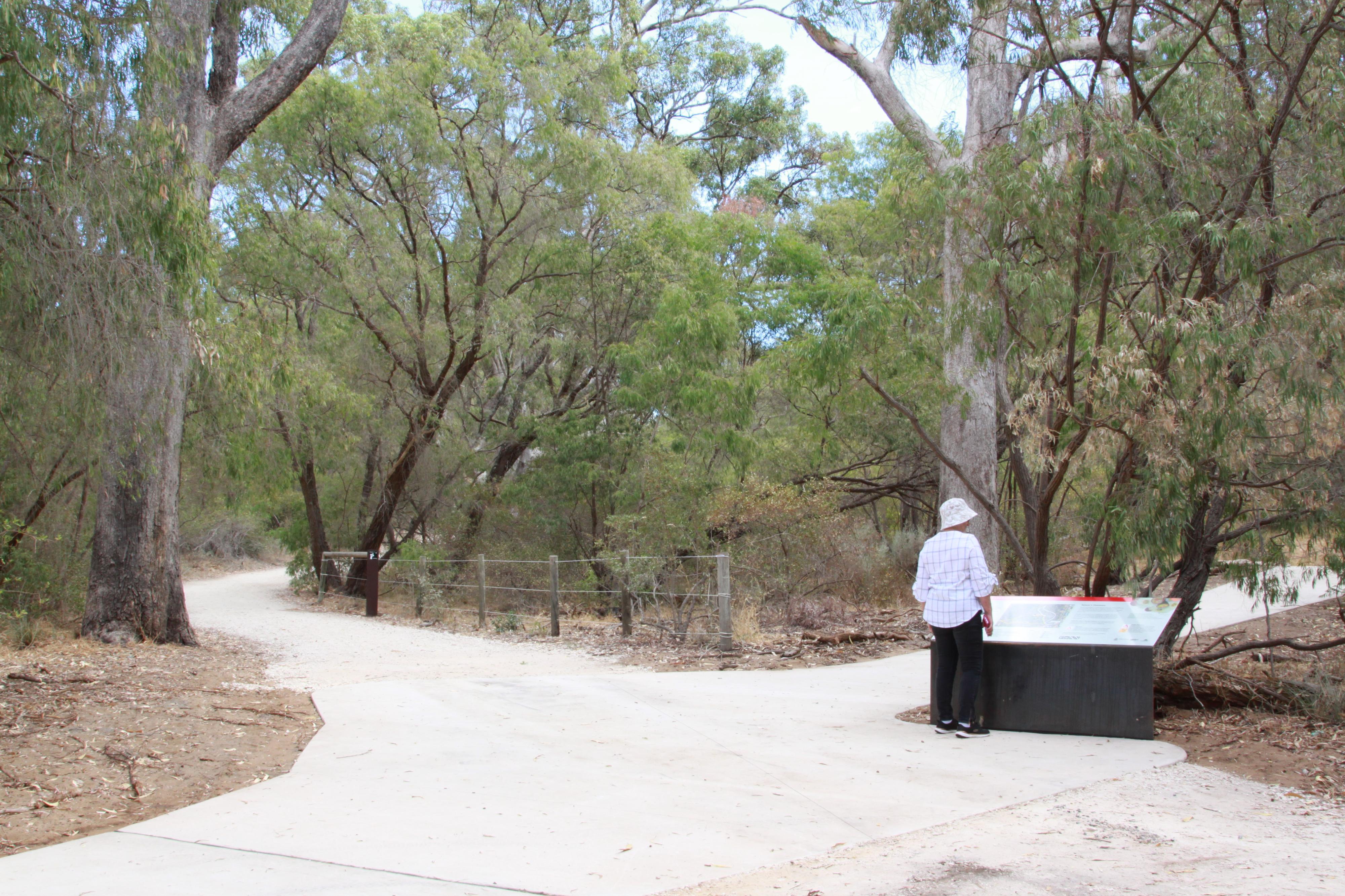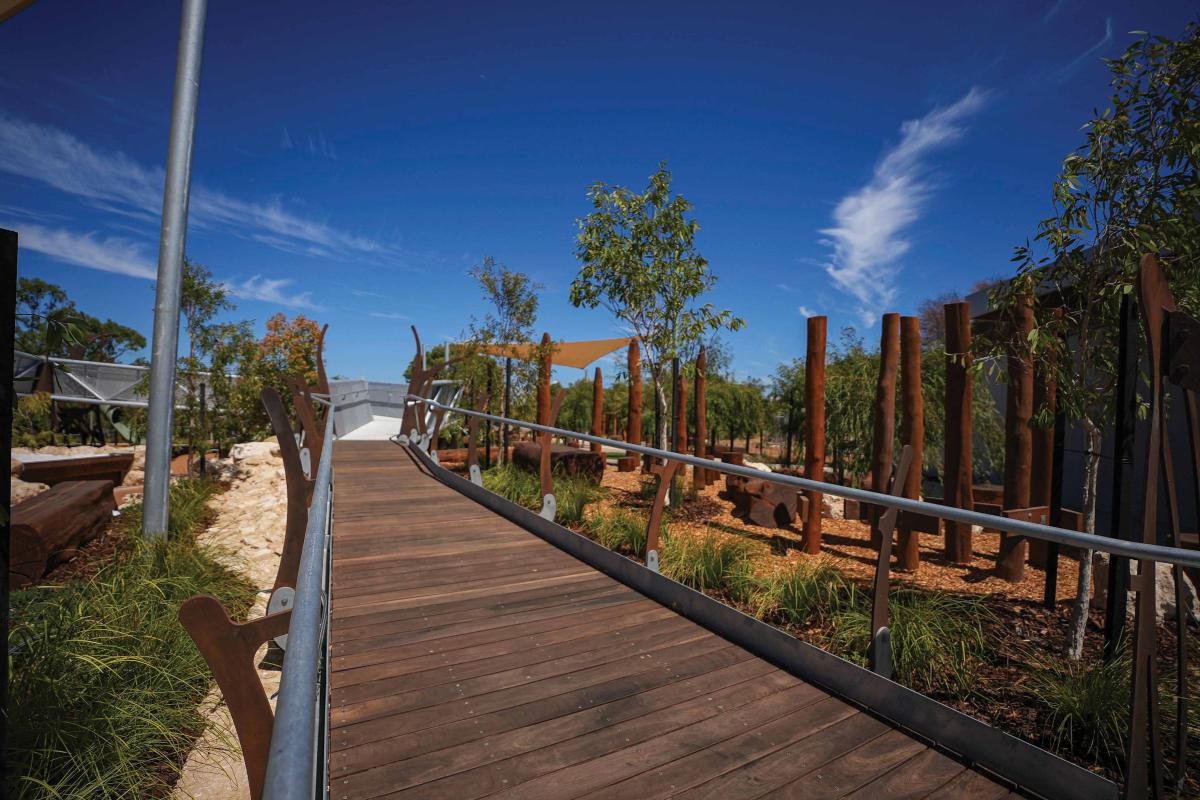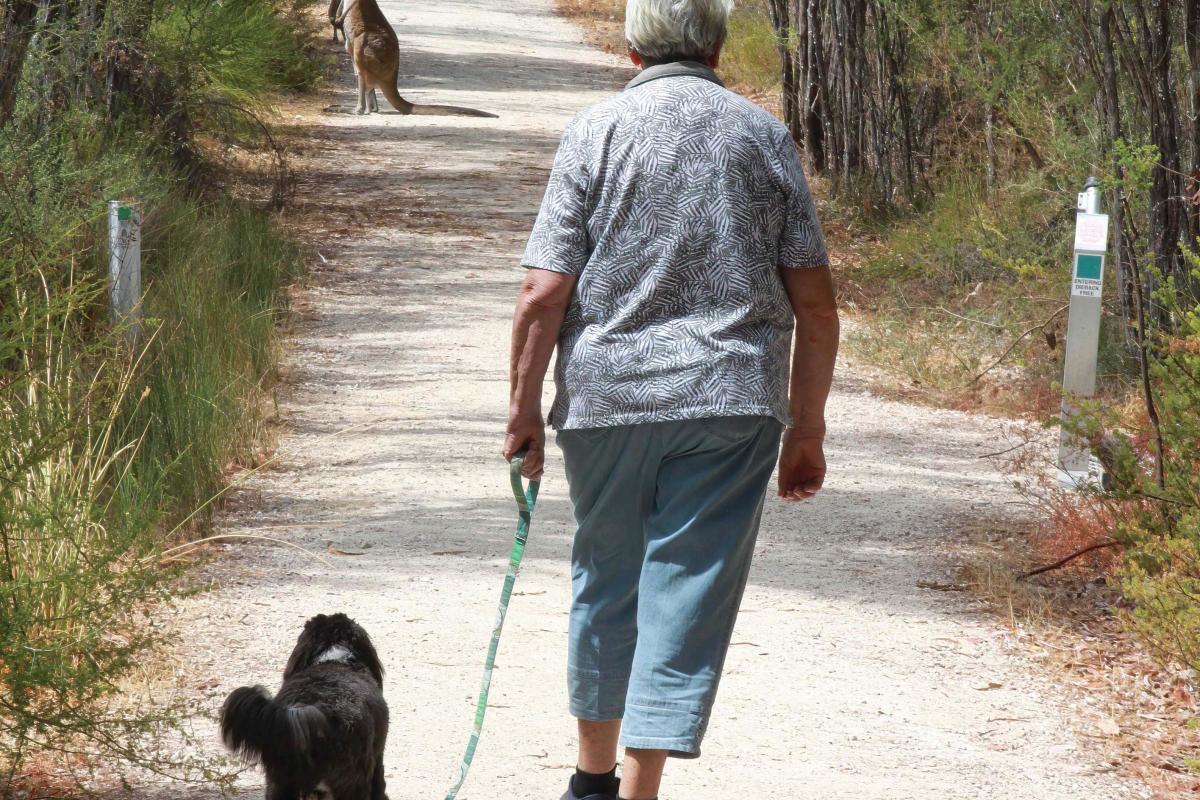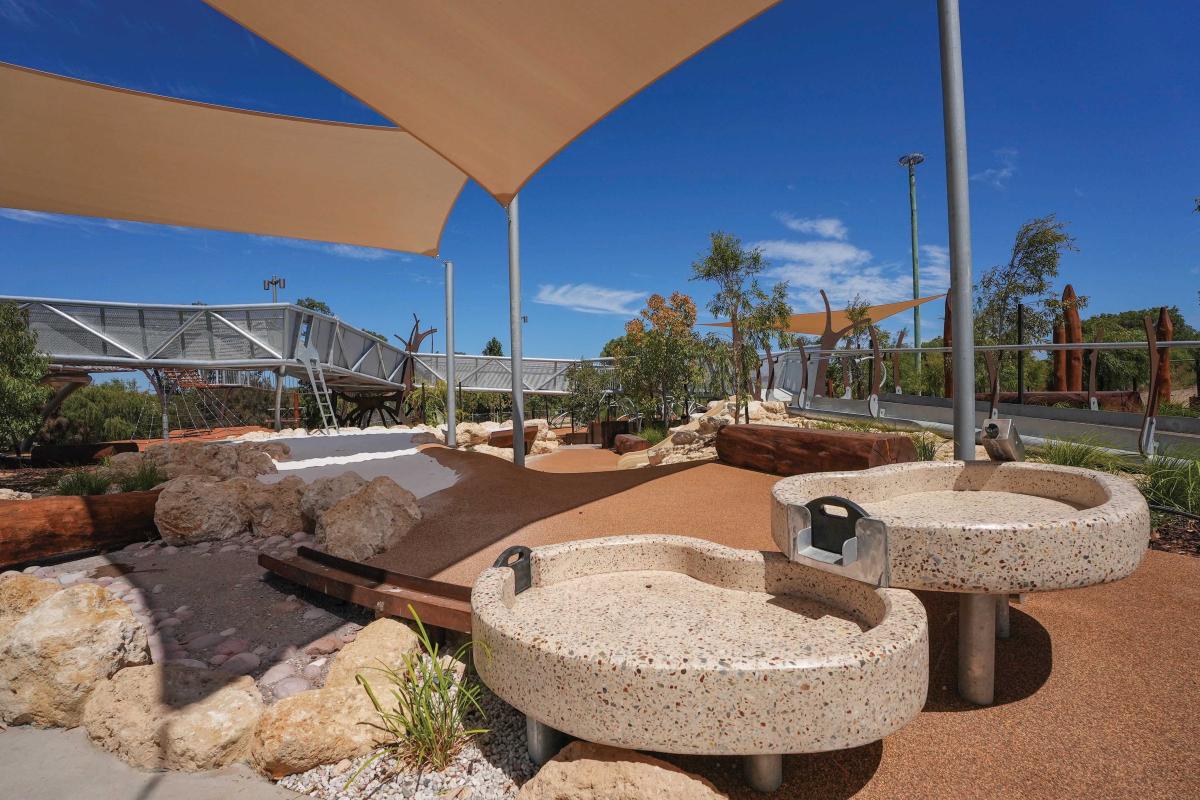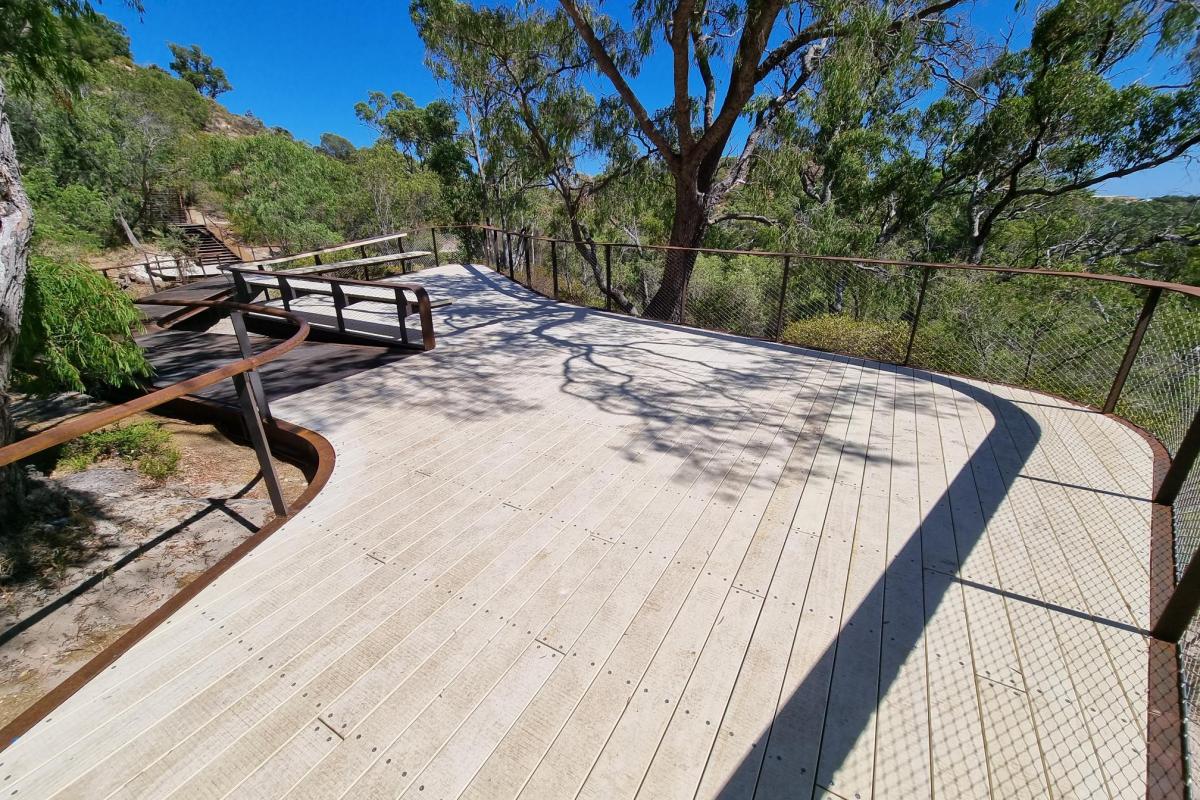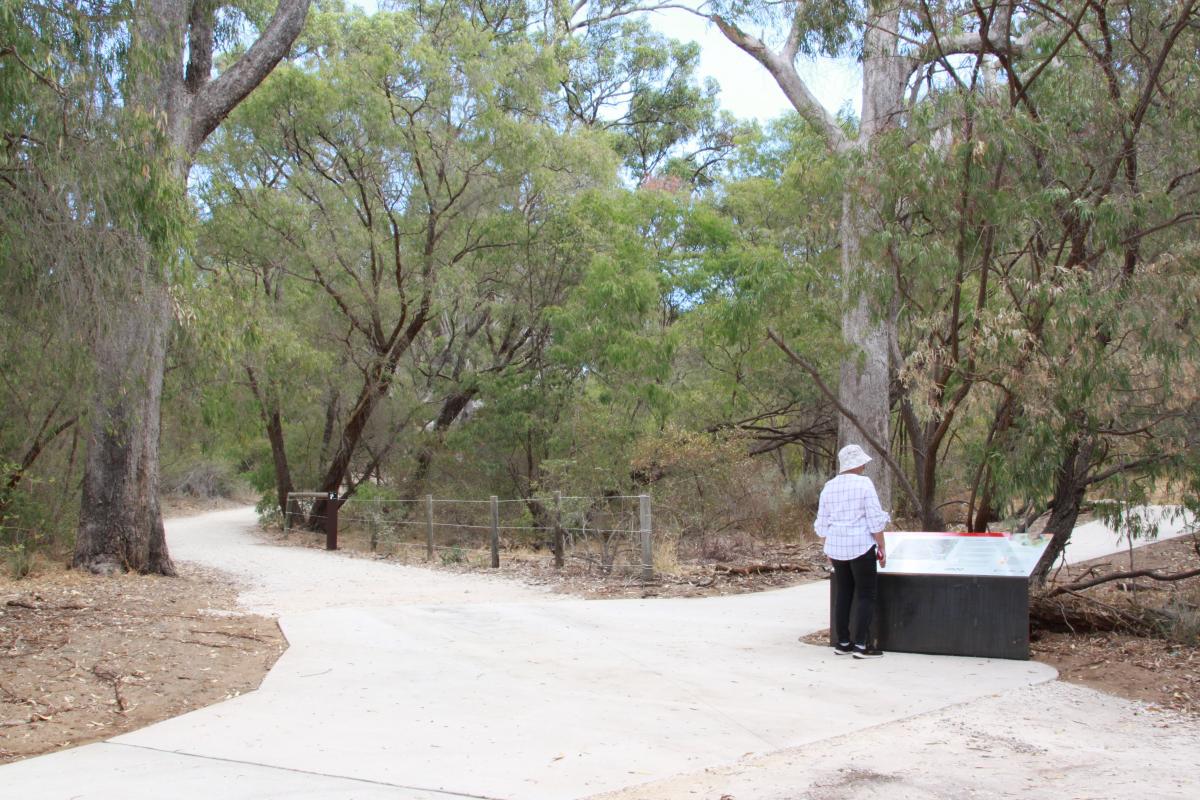Park Feature - Kalgulup Regional Park
This article appeared in LANDSCOPE magazine Winter 2024.
Covering 3168 hectares of land across three locations in and around greater Bunbury, Kalgulup Regional Park offers beaches, the Leschenault Estuary and Inlet foreshores, parts of the Collie, Brunswick and Preston River foreshores, landscaped parks, and natural bushland.
Kalgulup Regional Park (pronounced ‘Kaal-gool-up’) is made up of the previously proposed Preston River to Ocean and Leschenault regional parks and includes the popular Leschenault Peninsula Conservation Park, Maidens Reserve, Mangrove Cove, Leicester Reserve, Manea Park, Eaton Foreshore, Ridley Place Foreshore, Clifton Community Reserve and Watson Reserve.
The Kaneang, Pinjarup, Wardandi and Wiilman people are the Traditional Owners of Kalgulup Regional Park. The Noongar word Kalgulup means ‘place of fire’ or ‘place of burning camp’. The significance of the name derives from the campfires that were common around the estuary when Noongar people camped there in large numbers to fish and practice seasonal customary activities on their Country.
Fire and its elements (smoke, coals, ash) are at the koort (heart) of Noongar culture and the park motif is the woody cone of the mangite (Banksia grandis), which was used as a firestick.
There are heritage sites associated with early exploration, whaling, shipping and settlement throughout the park, including a memorial for John Boyle O’Reilly—an Irish poet, journalist, author and activist who was sent to Western Australia as a convict in 1867 and transferred to Bunbury where he remained for about a year before escaping and travelling to America.
Natural attractions
The regional park was established in 2021 through the State Government’s Plan for Our Parks initiative to ensure the conservation of the coastal plains, wetlands and woodlands of Kalgulup Regional Park that provide habitat for a wide range of mammals, birds and reptiles, including many threatened plant and animal species.
Vegetation along the coastal areas and riverbanks of the park includes the tuart (Eucalyptus gomphocephala), peppermint (Agonis flexuosa), flooded gum (Eucalyptus udis) and swamp paperbark (Melaleuca rhaphiophylla). Visitors to more inland areas of the park will encounter jarrah (Eucalyptus marginata), marri (Corymbia calophylla) and slender banksia (Banksia attenuata).
During spring, parts of the park transform into a wildflower wonderland as the flowering native trees burst into bloom and the colourful understorey comes to life. Prominent flowering species include the distinctive yellow-orange and red flowers of Skinner’s pea (Pultenaea skinneri), the iconic red and green kangaroo paw (Anigozanthos manglesii), and eagle-eyed visitors may spot a sandplain white spider orchid (Caladenia speciosa).
The Leschenault Estuary and inlet at Mangrove Cove are home to the most southern occurrence of white mangroves (Avicennia marina) in WA. Mangroves are highly specialised land plants that have adapted to living in salt water.
The park provides habitat for many native animals of conservation significance including the critically endangered western ringtail possum (Pseudocheirus occidentalis) and the vulnerable chuditch or western quoll (Dasyurus geoffroii). Western grey kangaroos (Macropus fuliginosus) are often seen in in the park, as is the occasional venomous snake, so bushwalkers should stay alert and keep to the tracks.
Birdlife is abundant in Kalgulup Regional Park and many areas are popular with twitchers. Forest red-tailed cockatoos (Calyptorhynchus naso) are often spotted, and lucky visitors may also encounter the endangered white-tailed Carnaby’s (Zanda latirostris) and Baudin’s (Zanda baudinii) cockatoos amongst the eucalypt woodlands.
The wetlands provide a sanctuary for waterbirds including vulnerable and endangered species such as the greater sand plover (Charadrius leschenaultia), fairy tern (Sternula nereis) and curlew sandpiper (Calidris ferruginea).
Maidens Reserve
Just a few minutes’ drive south of central Bunbury, Maidens Reserve is named for the pair of sand dunes 65 and 67 metres above sea level, which are the highest points in Bunbury.
Two brand new lookouts offer stunning views across Kalgulup Regional Park, the ocean and wider Bunbury. The lower 45-metre-high viewing platform is accessible via a 670-metre-long assisted wheelchair accessible pathway or by climbing 152 steps. A second, 67-metre-high upper lookout can be conquered by climbing a further 153 steps. There are barbecues, toilets and a playground near the car park.
Newly installed interpretive signage shares the natural, cultural and historical values of Maidens Reserve with visitors.
Walk trails meander through the reserve including the dual-use Tuart Walk between Dalyellup and Usher which is popular with cyclists.
Mangrove Cove
Mangrove Cove is located along the Leschenault Inlet in Bunbury. It is home to a popular all-abilities playground, a viewing tower, and a picnic area with barbecue and toilet facilities. A nearby pathway winds alongside the white mangroves that are nestled into the inlet.
The Mangrove Cove accessible playground opened in early 2023 and features mangrove root inspired climbing frames, ladders, slides, rope nets and bridges. The ground level facilities include a wheelchair-accessible sand pit and tunnels, water play area, basket swing, drums, chimes and cubbies.
“Maidens Reserve is named for the pair of sand dunes 65 and 67 metres above sea level, which are the highest points in Bunbury.”
And things are only getting better, at Mangrove Cove, with work on a new boardwalk due to be completed in late 2024, replacing the previous 190-metre-long boardwalk that was more than 20 years old. The new boardwalk follows the same footprint as the original, winding its way through the mangroves. It will cater for a wider range of visitors as it will be accessible for people in wheelchairs and with prams. To complement this, an upgrade of the existing pathway along the inlet within the Mangrove Cove precinct is also underway to provide safer access.
Leschenault Peninsula
Covering the thin strip of land separating the Leschenault Estuary from the Indian Ocean, Leschenault Peninsula Conservation Park in Australind, just north of Bunbury, has established bushwalking trails, and quiet nooks to observe the abundant bird and animal life or do a spot of fishing at popular Belvidere and Buffalo beaches.
For those who’d like to make a day of it, Belvidere recreation area has picnic facilities, gas barbecues, toilets and stunning views across the estuary.
Camping is available at Belvidere Campground, which has 28 sites (19 of which are suitable for caravans), each with a picnic table and plenty of space. The Cut, located at the southern end of the peninsula where the estuary opens to the ocean, is accessible only by boat or a nine-kilometre walk from Belvidere along the Ridge Trail.
Camp sites at Belvidere Campground cannot currently be booked in advance, so it’s first in, best dressed! As it can be particularly busy during weekends and holiday periods, a back-up accommodation plan should be in place in case there are no sites available.
Visitors need to be aware that some areas may be subject to waterborne pathogens and Ross River virus is known to be present in the area. Mosquito repellent is highly recommended when visiting the peninsula.
Do it yourself
- Where is it? Bunbury, Australind, Eaton and the Leschenault Estuary.
- Total area: 3168 hectares.
- Things to do: Boating, camping, bushwalking, swimming, fishing.
- Camping: Belvidere campground: non-bookable, camping fees apply.
- Must see sights: The wheelchair- accessible, interactive playground at Mangrove Cove, and the recently completed scenic lookouts and trail at Maidens Reserve.
- Furry friends: Dogs are not permitted in Leschenault Peninsula Conservation Park, but are allowed in most other areas of Kalgulup Regional Park provided they are on a leash at all times.
- Nearest Parks and Wildlife Service office: Bunbury Regional office, corner of Dodson Road and South West Highway, Bunbury. (08) 9725 4300. Wellington District office, 147 Wittenoom Street, Collie. (08) 9735 1988
